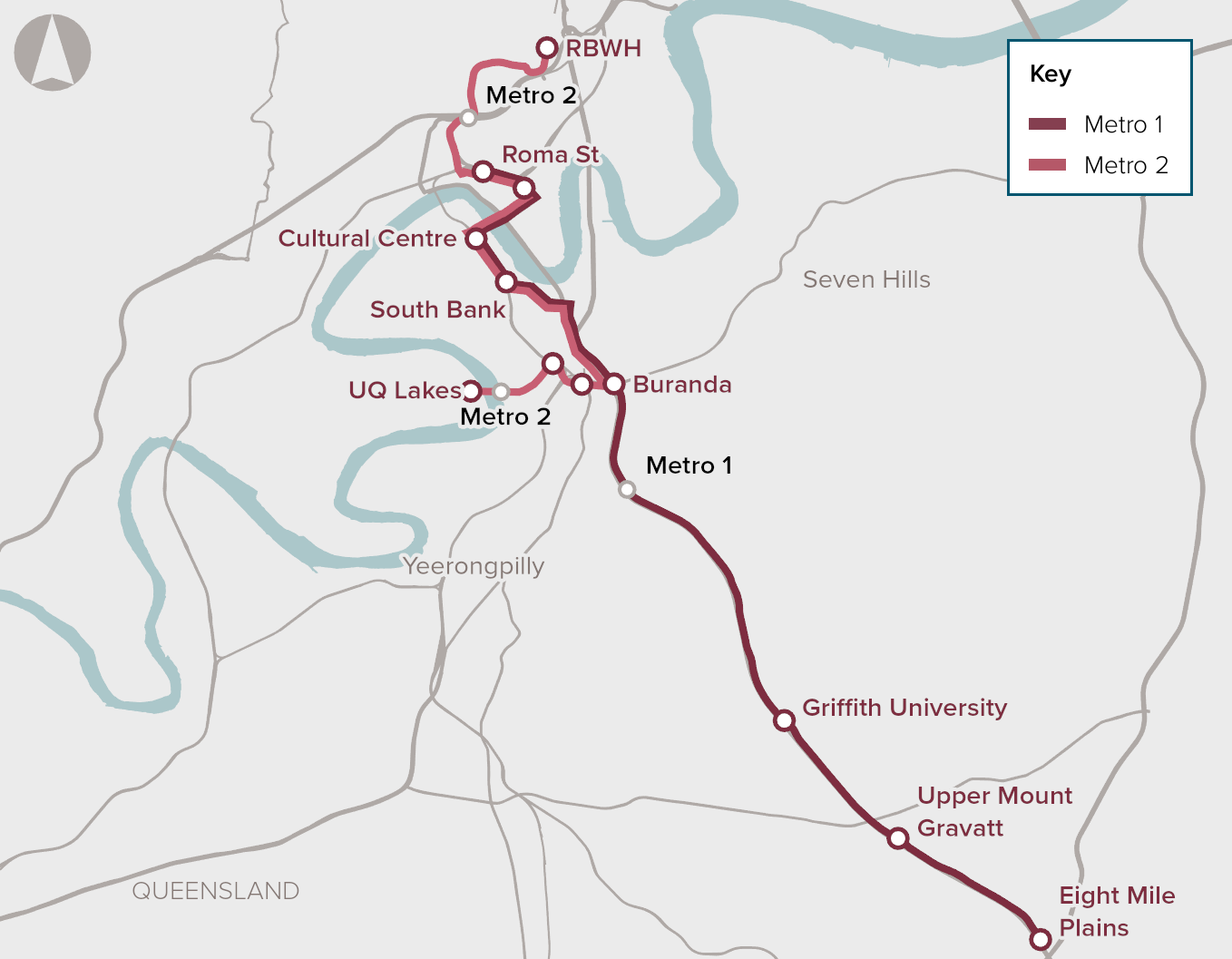
Problem to be addressed
Capacity constraints on the inner-city Brisbane bus network are leading to slower and less reliable public transport journeys. Demand for public transport is increasing, driven by employment growth centred in the inner city, while most population growth is occurring in middle-ring and outer suburbs. In 2016,an average of 368,000 passengers boarded buses each day in Brisbane. This is projected to grow to 581,000 passengers each day by 2031, a 58% increase.
The existing Brisbane busway network includes 25 km of dedicated bus corridor, but buses are delayed at key intersections where they compete with other traffic. This is leading to long bus queues and services not arriving on time. Bus stations are also congested, with limited platform capacity and inefficient customer boarding practices.
In the absence of additional public transport capacity, further strong growth in commuter trips into Brisbane from the fast-growing areas of South East Queensland will exacerbate congestion issues, resulting in nationally significant productivity losses.
Project description
Brisbane Metro will involve a set of infrastructure and non-infrastructure changes to bus services in inner Brisbane. The business case evaluated by Infrastructure Australia comprised removing key infrastructure bottlenecks on the busway network, including:
• designating Victoria Bridge as a green bridge and removing general traffic
• constructing a new underground station and a tunnel
• using longer, higher-capacity Metro vehicles with faster and easier boarding and alighting
• revised service patterns to increase frequency and truncate lower-use services.
The project will complement Cross River Rail by providing for interchange between the bus and rail networks at Boggo Road and at Roma Street.
Economic, social and environmental value
The project will deliver significant economic benefits in the form of travel-time savings, decongestion benefits, increased busway capacity and associated social and environmental benefits such as lower air pollution and greenhouse gas emissions through a mode shift from private to public transport. The proponent’s stated benefit–cost ratio is 2.4, with a net present value of $1,235 million (7% real discount rate).
Capital cost of proposal as stated by proponent (2017 business case) $944 million (P90, nominal, undiscounted) | Australian Government contribution $300 million | State government contribution To be determined | Private sector contribution To be determined.


 EVALUATION COMPLETE
EVALUATION COMPLETE





